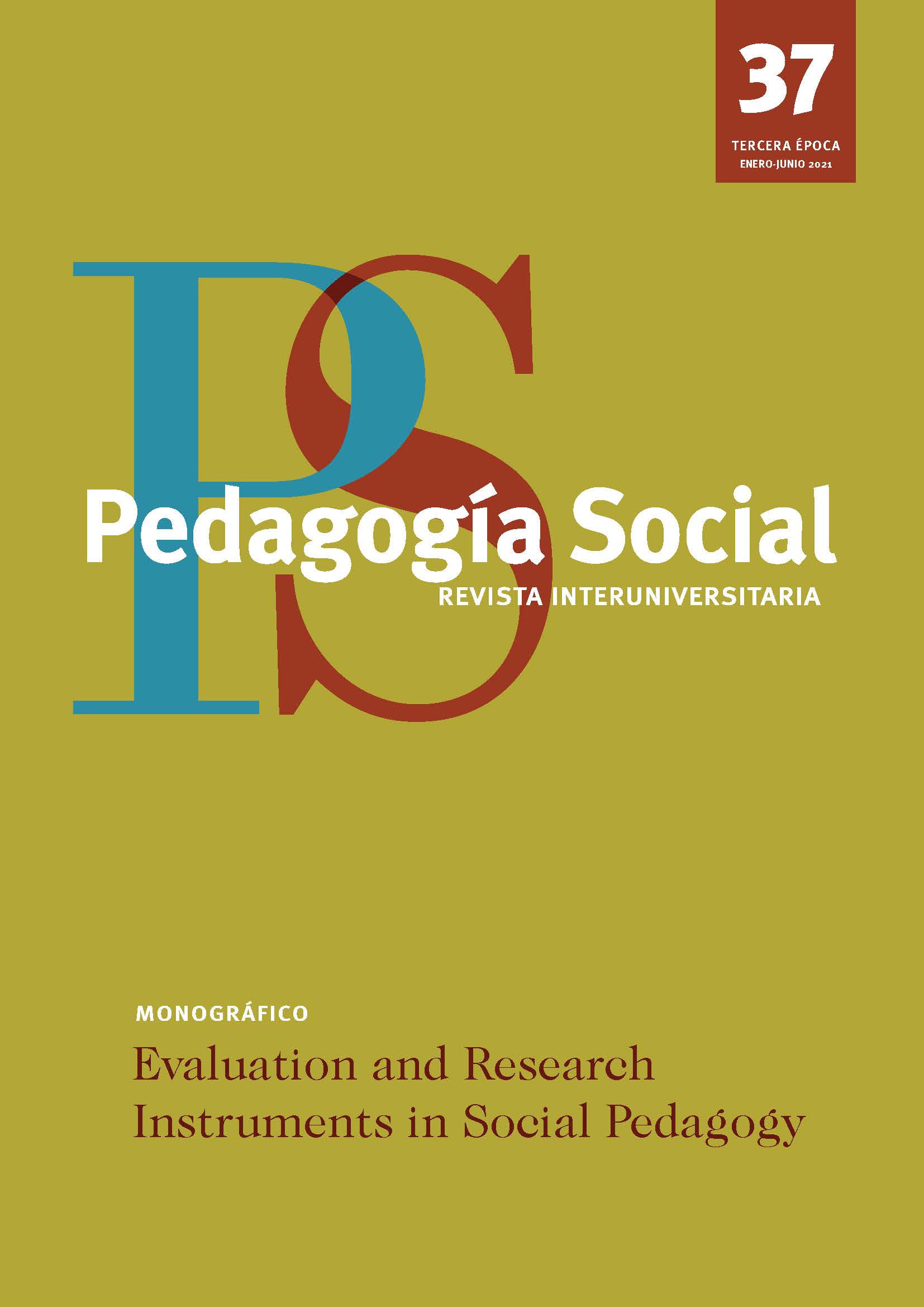Estudio exploratorio sobre las tendencias de la práctica profesional frente a la violencia en entornos de acción socioeducativa
DOI:
https://doi.org/10.7179/PSRI_2021.37.09Palabras clave:
educación social, noviolencia, ética, violencia, cultura de pazResumen
Introducción: Se expone el papel central de la educación social como disciplina que ofrece una acción bidireccional y de mediación entre las estructuras sociales, de las que emanan diversas formas de violencia estructural, y la ciudadanía, que se ve violentada. Se expresa la diferencia entre formas de violencia objetiva y subjetiva y cómo la cultura de paz ofrece un marco de análisis útil para pensar, desde ella, la práctica socioeducativa. Metodología: A través del uso de entrevistas se han recogido los procesos de significación de la violencia de un grupo de veinticinco profesionales. Son analizadas, haciendo uso de la metodología de la grounded theory, utilizando el software Atlas.ti con un sistema de codificación in vivo. Resultados: Se exponen, por un lado, los efectos de la violencia vivida y su normalización en la práctica socioeducativa y, por otro, el hallazgo de tres tendencias profesionales: vocacional-afectiva, estructurante-coercitiva y ético-reflexiva, con diferentes efectos sobre las dinámicas del ciclo de la violencia en entornos de acción socioeducativa. Discusión: Se plantea una mejora de la práctica socioeducativa a través del desarrollo de la tendencia profesional ético-reflexiva, frente a las limitaciones manifestadas en las otras dos tendencias.
Descargas
Descargas
Publicado
Cómo citar
Número
Sección
Licencia
Derechos de autor 2021 Pedagogía Social. Revista Interuniversitaria

Esta obra está bajo una licencia internacional Creative Commons Atribución-NoComercial-CompartirIgual 4.0.
Derechos de reproducción y archivo
La versión publicada de los artículos podrá ser autoarchivada por sus autores en repositorios institucionales y temáticos de acceso abierto. No obstante la reutilización total o parcial de los mismos en nuevos trabajos o publicaciones deberá ser autorizada por Pedagogía Social. Revista Interuniversitaria.
Los trabajos publicados deberán ser citados incluyendo el título de la Revista, Pedagogía Social. Revista Interuniversitaria, nº, páginas y año de publicación.
Responsabilidades éticas
Pedagogía Social. Revista Interuniversitaria no acepta material publicado anteriormente en otros documentos. Los/as autores/as son responsables de obtener los permisos oportunos para reproducir parcialmente material de otras publicaciones y citar correctamente su procedencia. Estos permisos deben solicitarse tanto al autor/a como a la editorial que ha publicado dicho material.
Es obligación de Pedagogía Social. Revista Interuniversitaria detectar y denunciar prácticas fraudulentas.
En la lista de autores/as firmantes deben figurar únicamente aquellas personas que han contribuido intelectualmente al desarrollo del trabajo.
La revista espera que los/as autores/as declaren cualquier asociación comercial que pueda suponer un conflicto de intereses en conexión con el artículo remitido.
Los autores deben mencionar en el manuscrito, preferentemente en el apartado del método, que los procedimientos utilizados en los muestreos y controles han sido realizados tras la obtención de consentimiento informado.
La revista no utilizará ninguno de los trabajos recibidos con otro fin que no sea el de los objetivos descritos en estas normas.
Aviso de derechos de autor/a
© Pedagogía Social. Revista Interuniversitaria. Los originales publicados en las ediciones impresa y electrónica de esta Revista son propiedad del Pedagogía Social. Revista Interuniversitaria, siendo necesario citar la procedencia en cualquier reproducción parcial o total.
Salvo indicación contraria, todos los contenidos de la edición electrónica se distribuyen bajo una licencia de uso y distribución “Creative Commons Reconocimiento-No Comercial 3.0 España” (CC-by-nc). Puede consultar desde aquí la versión informativa y el texto legal de la licencia. Esta circunstancia ha de hacerse constar expresamente de esta forma cuando sea necesario.






